I don't have time to write anything detailed this morning, but I wanted to pass on this information from her. The new photos show the Sonja sword has a partially fullered blade, just like the California sword. That means we now have a sample of two of those along with a data point for when it was originally sold. This is going to be extremely helpful for producing both a typology and chronology of Fake Hercules Swords. It's clear we've got at least a copper alloy "Type F" (F for the fullered blades of the California and Sonja swords), a copper alloy "Type J" (J for the "J" mark visible on the blades the Nova Scotia, Florida, France, and Italian eBay swords), and at least a couple of forms with short blades like the Design Toscano swords (some made in cast iron and some possibly made with copper alloy). My guess is still that the Type F probably is older than the Type J. There's much more fun work to be done sorting these out.
One more thing to point out: check out the blade shape of the sword in the newspaper clipping - yet another variant.
That's about all I have time for now. I'm just going to post the text from Sonja's email along with the photos she sent me. Have fun everybody! And say thanks to Sonja!
Weight: 1502 gr.
Lenght: 58,5 cm
Width: 8 cm
Decades ago the sword was greenish, much more green than now that is quite black.
My father confirmed me he bought in 1970 from a friend of a friend (unfortunately both of them passed away). The guy was used to sell in Porta Portese market, a famous flea market in Rome, every kind of false ancient objects. In particular my father told me, the guy explained how he did it, letting the swords corroding in the sole or in the mud, and there were a lot of them.
Here there are other pictures.
My father in 1992 found the article you see, in a newspaper with the photo of a sword with the same hilt, but the blade has a different shape. The article says that a gang of young students living in Caserta, near Neaples, was trying to sell ancient objects, on www.aucland.it in auction, and they were arrested. The young students said they found in the sea in Sicily, during a holiday (!) maybe that's why in the article it is written the hilt is from Poseidone.
This is everything I can add to my story at the moment."
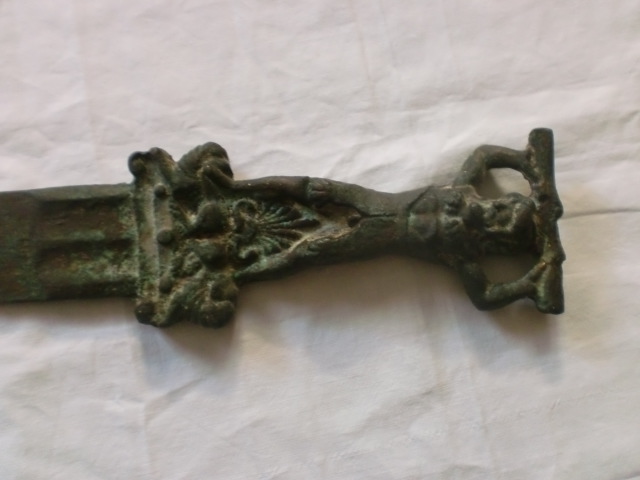
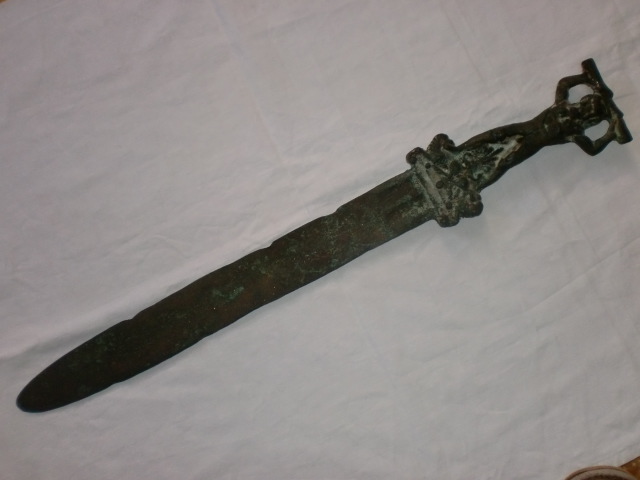
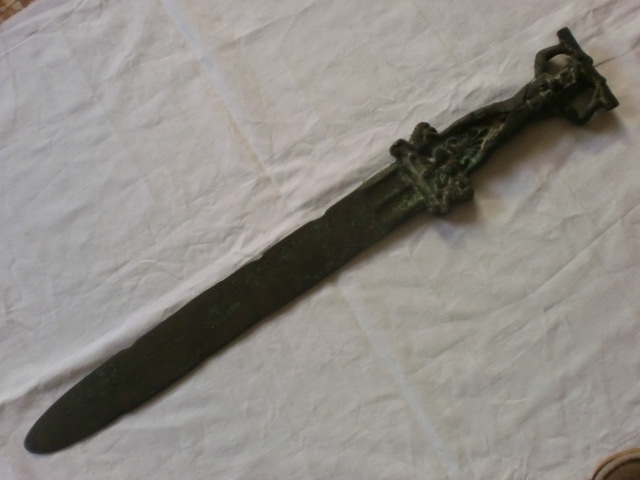
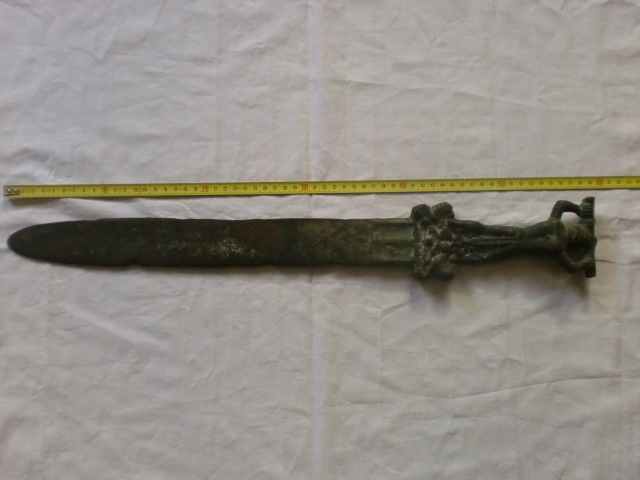
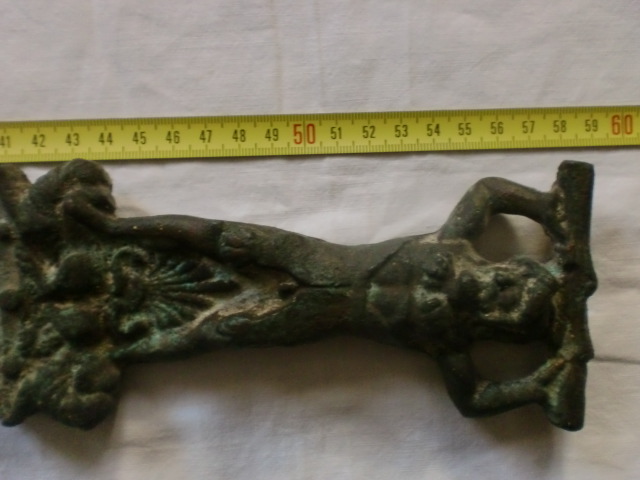
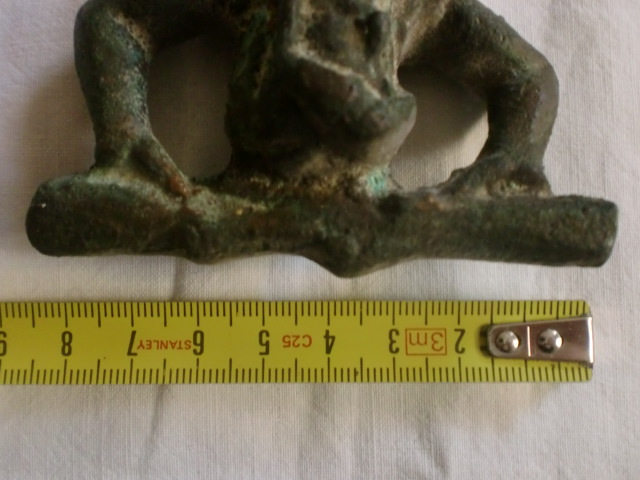
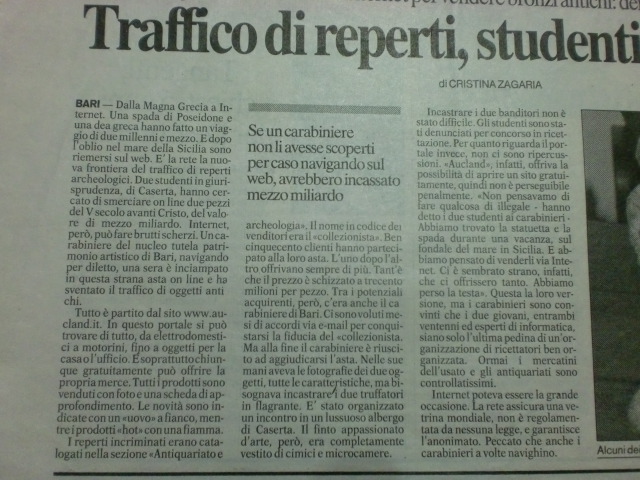
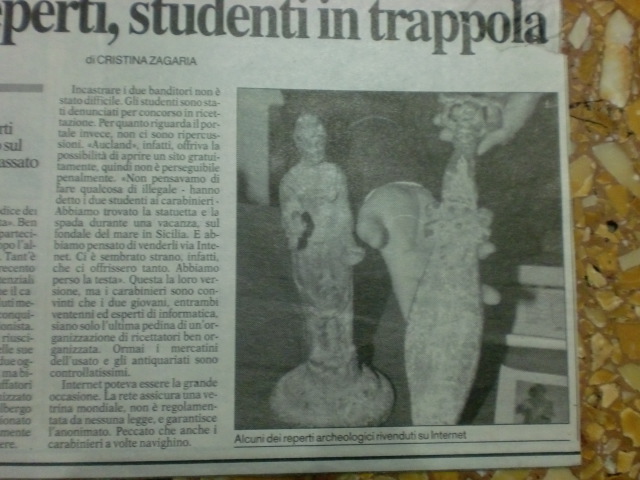


 RSS Feed
RSS Feed
